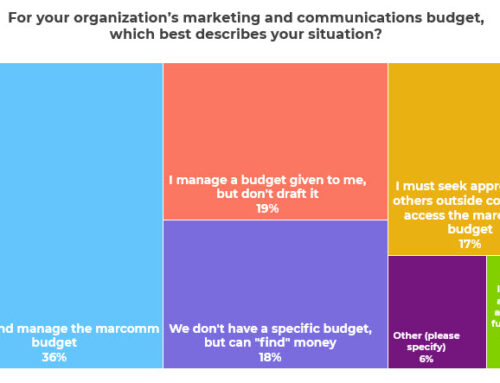For the ninth edition of the Nonprofit Communications Trends Report, I wanted to go deeper into the communications goals and strategies nonprofits were using.
I assumed that organizations with fewer high priority goals and strategies would be more effective.
My educated guess was wrong.
The most effective organizations reported what I originally thought was a ridiculous number of high priority goals and strategies (and still do, at some level).
But that’s why we do this survey research! We need to set aside assumptions and see what the data tells us.
The nonprofits reporting the most effectiveness overall and on specific goals are most likely to have 6-8 essential or high priority goals and 6-8 essential or high priority strategies, defying conventional wisdom about limiting these choices to a few.
The median overall is just 2 essential strategies and 2 high priority strategies, for a total of 4. This suggests that less effective nonprofits should try additional strategies beyond the top four (permission-based marketing, content marketing, event and experience marketing, and relationship marketing), such as general advertising or partner and alliance marketing.
Rather than focusing on limiting goals and strategies, the survey data suggests that focusing on staff expertise — and reaching mastery level at key skills — may be more productive.
To increase your communications effectiveness, think about . . .
- Building staff expertise to mastery level on specific marketing strategies and skills.
- Implementing clear communications processes and procedures (e.g., editorial calendars, standard workflows).
- Creating an organizational culture that values strategic communications work, including excellent working relationships between communications staff and executives.
The most effective organizations are doing all three well.
Get your copy of the 2019 Nonprofit Communications Trends Report to explore this data and much more.





